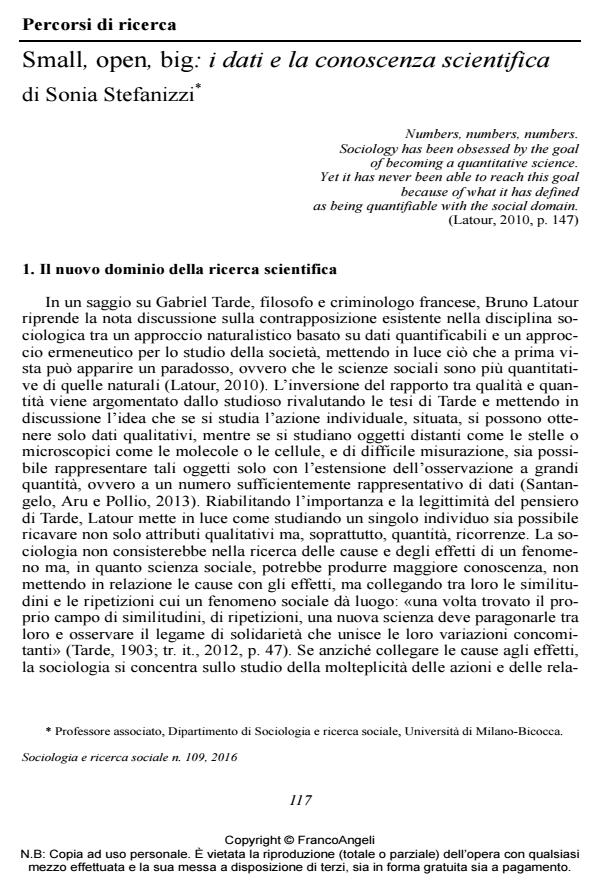Small, Open, Big: Data and Scientific Knowledge
Journal title SOCIOLOGIA E RICERCA SOCIALE
Author/s Sonia Stefanizzi
Publishing Year 2016 Issue 2016/109
Language Italian Pages 10 P. 117-126 File size 50 KB
DOI 10.3280/SR2016-109010
DOI is like a bar code for intellectual property: to have more infomation
click here
Below, you can see the article first page
If you want to buy this article in PDF format, you can do it, following the instructions to buy download credits

FrancoAngeli is member of Publishers International Linking Association, Inc (PILA), a not-for-profit association which run the CrossRef service enabling links to and from online scholarly content.
The paper is an introduction to a series of essays discussed in two parallel sessions during a conference organized in Rome on the 25th and 26th of September 2016 by the department of Methodology of the AIS (Italian Association of Sociology). Given the introductory nature of the presentation to the contributions that have accepted the challenge of Big Data, trying to integrate these powerful research instruments with official statistics, surveys and data stores, the goal here is to retrace, through the submitted essays, some of the most noteworthy aspects of Big Data that require careful epistemological and methodological reflection
- Per un’epistemologia del digitale: note sull’uso di big data e computazione nella ricerca sociale Enrica Amaturo, Biagio Aragona, in Quaderni di Sociologia /2019 pp.71
DOI: 10.4000/qds.3508 - Handbook of Research on Advanced Research Methodologies for a Digital Society Felice Addeo, Valentina D'Auria, pp.24 (ISBN:9781799884736)
- Handbook of Research on Advanced Research Methodologies for a Digital Society Costantino Cipolla, pp.42 (ISBN:9781799884736)
- The Phases of Qualitative and Quantitative Methods in Italian Sociology: Institutionalisation, Social Engagement, and Emerging Problems Giuseppe Masullo, in The American Sociologist /2025 pp.50
DOI: 10.1007/s12108-024-09615-5
Sonia Stefanizzi, Small, open, big: i dati e la conoscenza scientifica in "SOCIOLOGIA E RICERCA SOCIALE " 109/2016, pp 117-126, DOI: 10.3280/SR2016-109010